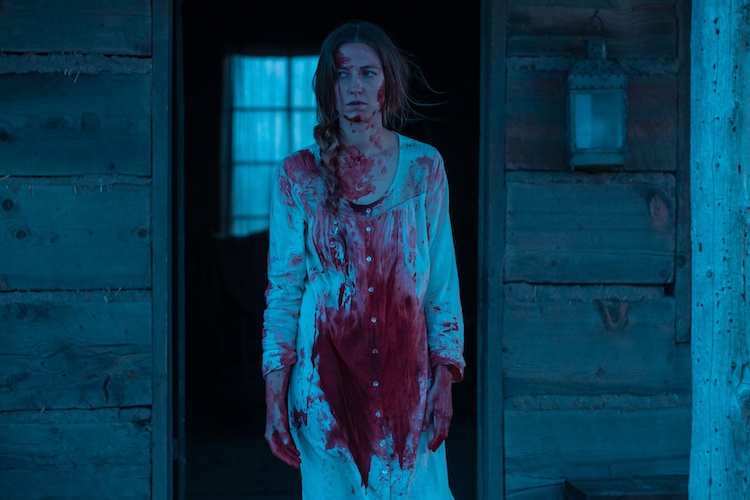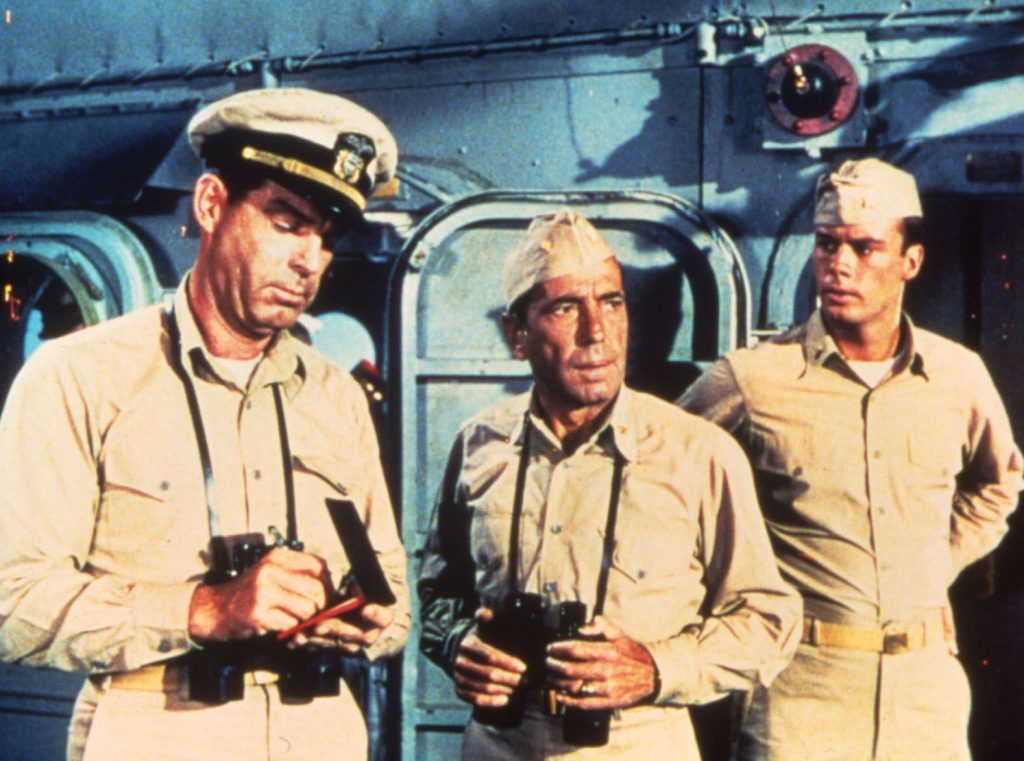Growing up in rural New York where heavy snow is just a matter of course, you have an innate understanding of exactly how long a winter storm can be considered tolerable, or even fun. For most people, it’s about 72 hours. Up until then, it’s a novelty, even for people who have spent their lives surrounded by inclement weather. Kids have snow days, and the roads are impassable, so any adult responsibilities you have in the outside world are put on an indefinite hiatus. There’s nothing you can do but wait for the snow to stop; the break is almost relaxing.
At first.
After those first three days, though, the walls of your house seem almost imperceptibly closer together, the mounds of snow outside that much more impenetrable. People weren’t meant to be separated from society in this way, and too much time alone with your thoughts is good for no one. There’s a reason why isolation has always been a staple of the horror genre: it’s one of the most mundanely chilling elements of human existence. What starts as dull descends into unnerving and destabilizing shockingly fast.
The Wind, directed by Emma Tammi in her film debut, focuses on the unendurable isolation of life on the Great Plains during the 1800s, when the opportunity to own land lured homesteaders away from the east into the largely unsettled Midwest. At the heart of The Wind (now on VOD; on DVD/Blu-ray Sept. 3) is the historical phenomenon of prairie madness. As any psychologist (or horror film director, for that matter) can attest, prolonged isolation is almost always a recipe for emotional instability.
The westward expansion into the Great Plains during the 1800s never took into consideration the emotional and mental health of homesteaders. The topography and climate were punishing, with flat, empty land stretching on for miles upon miles separating neighbor from neighbor. Frontiersmen and -women were isolated not only from their fellow homesteaders, but from friends and family back East. In the days before train travel or a reliable postal service, one could not even depend upon visits or letters from loved ones as a source of comfort. The prairies were home to long, brutally cold winters, which would keep homesteaders trapped in their cabins for weeks on end. And even during the warmer months, the incessant sound of the wind whistling through every crack in a house was often said to have a maddening effect on the pioneers.
In the film, Lizzy (Caitlin Gerard) lives alone in a cabin with her husband Isaac (Ashley Zukerman), a stoic and pragmatic farmer who has little time for her fears about life on the prairie. Their closest neighbors were a least a mile away, but Emma (Julia Goldani Telles) and Gideon (Dylan McTee) have just moved into an abandoned cabin nearby, bringing the total population of their isolated community to four.
While Lizzy and Isaac have lived on the plains for some time and grown familiar with its harshness and eccentricities, Emma finds it more difficult to adjust to a life away from civilization. She becomes listless and develops a particularly off-putting obsession with the various “demons” of the prairie. Before long, she becomes convinced that there is something inherently wrong with her new home, and the prairie itself. Lizzy is sympathetic but disregards Emma’s concerns. If Emma is right about the prairie, that means Lizzy has been right about it this whole time as well, and there really is a malevolent, unknown force out on the plains.
The Wind has a fractured narrative structure that tells the story out of chronology, adding to the general feeling of instability. The viewer is disoriented, unsure of the sequence of events or even whether or not certain things actually took place. The film asks the viewer to question what is or isn’t real. But in the end, just because something is in your head doesn’t mean it doesn’t exist. There may not be literal demons of the prairie, but there is without a doubt something dark and unsettling occurring in these uniquely isolated rural communities.
The Homestead Act of 1862 required homesteaders to live on and work the land for five years before officially receiving ownership of the property. Few lasted that long. For some, the move to the Midwest was incredibly destabilizing, and they ended up either quickly returning East or committing suicide. One imagines endless monotony, conversations that play out only in your head, and an overwhelming sense of boredom. How many times can you look for faces in the beams of wood that line your cabin? Read the same two books? Count the steps from the cabin door to the laundry line and back again?
During the course of the film, we frequently see Lizzy alone in her little cabin, Isaac off working the farm. Tammi and cinematographer Lyn Moncrief use expansive long shots of the farm and surrounding area to emphasize how very far away they are from the rest of the world, but when they shoot inside the cabin, it’s tight and claustrophobic. The house becomes oppressively small, suffocating Lizzy. But it’s also a place of refuge, providing protection from the vast unknown of the wide-open prairie. Being forced to rely on it for her safety when it provides her no real comfort makes Lizzy’s relationship with this makeshift home all the more complicated.
There are times where Isaac has to travel to gather supplies for the impending winter, leaving her even more alone and vulnerable than usual. The prospect of being stuck on the farm by herself for days on end is horrifying because of its implications — anything could happen to her while Isaac is away and no one would know. She is on her own in every way, to fend off threats both supernatural and natural (the wolves that approach her while she’s hanging her laundry provide a terrifying reminder of the wildness of their home).
Physical isolation is enough of a trial to overcome, but it’s clear that Lizzy is emotionally alienated as well. We learn through a flashback that she gave birth to a stillborn son, but her husband doesn’t seem interested in processing his grief beyond saying, “It was God’s plan.” Being unable to engage with your spouse on important issues is incredibly difficult, but even more so when they’re the only person you ever see. With the depiction of this subtly fractured relationship, it’s vitally important that The Wind has a female director and screenwriter. They are able to believably develop a horror story about a woman who is isolated not only society, but from her own husband. This narrative lends itself to a concept that most women are familiar with: of knowing in their bones that something is wrong, only to have the men in their lives dismiss their concerns.
Isaac is adamant that Lizzy is hysterical and condescendingly reassures her when she tries to tell him that she believes there is something in the prairie that means them harm. He patronizes her, burning the Demons of the Prairie leaflet she received from a pastor upon arriving on the Great Plains, as though she is a foolish child who has let her imagination get the better of her. Isaac is so convinced of his rightness as the level-headed man of the house and dismissive of anything that even resembles emotion that he is unable to appreciate the threat they face.
Men have an unfortunate history of disregarding the fears of women, whose horror of being disbelieved stretches back to Greek mythology, where Cassandra is cursed with the gift of prophecy only to have the men in her kingdom ignore her warnings. The deep-seated dread that accompanies knowing something is wrong but having no one believe you is well-mined territory in the horror genre, and it is very frequently a woman who is disbelieved: Rosemary in Rosemary’s Baby. Barbara in Night of the Living Dead, rightfully afraid of the cemetery before the zombies arrive). Sidney in Scream, manipulated by her boyfriend into thinking that she’s crazy to suspect him, when he is actually the biggest threat in her life. The countless women and girls at the beginning of horror movies who beg their boyfriends not to go into the spooky houses or dark basements.
The greatest strength of The Wind is that its female filmmakers are able to create women characters that don’t feel contrived within the horror narrative. It’s easy to imagine a version of this film where the writers condescend to Lizzy and Emma as much as their husbands do. But although it’s a horror film, both characters feel incredibly grounded in reality.
At no point in the film is Lizzy portrayed as a raving lunatic. She is a caring wife, a competent worker, and a strong plainswoman. One need only see her level-headed, determined gaze as she wields her shotgun, the only protection she has against the terrors of the unknown besides prayer and candlelight, that this is not a weak-willed person prone to flights of fancy. Whatever she is facing, it’s a legitimate threat, and it is irrelevant whether it’s external or merely a manifestation of psychological issues borne from isolation.
The film devotes a lot of energy to the depiction of feminine isolation, but it also makes a statement with the decision to have Lizzy’s character be an immigrant. This additional element of social alienation was, historically, a powerful factor in prairie madness. Imagine living within 20 miles of only a few other people, all of whom speak a different language and observe different customs from yours.
In a flashback to Lizzy’s pregnancy, she is alone in the cabin and clearly terrified by some unnatural force that is tormenting her. Attempting to protect herself, she recites a German prayer which, in a state of shock, she repeats until Isaac returns home the next day and discovers her. He seems disturbed by her semi-catatonic chanting, but when he chastises her, it’s because she isn’t speaking English. This, again, puts distance between Lizzy and Isaac. How can he attend to her emotionally if he seems threatened by a fundamental aspect of who she is?
There’s a social aspect to the concept of alienation in this film as well, in terms of how Emma and Lizzy relate to one another. When they are alone and could confide in each other, they are unable to delve into the matters that really concern them. There is a sense, especially for Lizzy, that these are not appropriate things to discuss. When Emma pushes the boundaries of propriety, Lizzy warns her not to be “unpleasant” in front of the men (even though the men are outside at the moment). But how can one be expected to survive these brutal conditions if the mere mention of emotional vulnerability is off-limits? It’s just one more way in which our heroines are isolated from one another.
With The Wind, Emma Tammi creates a piece of surprisingly intimate, female-oriented historical horror. There are no jump scares; it opts instead for a tense, pervasive sense of dread that permeates the entire film. By building a narrative that uses relatable feelings of isolation and alienation to develop its specific brand of horror, it creates an unnerving tone that is all the more intense because it feels so grounded in reality. We’ve all wished for a little solitude from time to time. But think of the last time you were home alone at night, listening to a faucet drip until you could swear the sound was coming from inside your own head, and you’ll remember how quickly a blessing becomes a curse.






